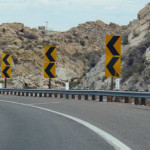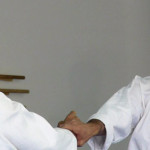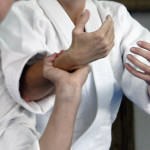One of the yudansha who teaches at our dojo, Cyril, uses a variety of people as Uke when he demonstrates techniques. It makes classes that much more intense, because you never know when or if you’ll be called up, so you’d best pay sharp attention.
Learning to be a good uke is really important to me, for a lot of reasons. A lot of the most valuable learning in Aikido comes from ukemi. Like learning to move with and into the energy and situation, rather than fighting against it, for instance, not as a way of giving up, but to keep one’s center and regain balance. Being a good uke isn’t just falling, it includes providing committed attacks so one’s partner can practice effectively. Ukemi seems to be where I find growth and discovery happening, more than in practicing techniques as Nage.
So I’m grateful every time I’m called up to help demonstrate a technique. Even when (and it seems to be the case more often than not) I screw it up in some spectacular way, and have to be shown what was wanted. Although he is incredibly gracious about it, I hate being incompetent. Crawling under a rock has sounded like a good plan on a few occasions.
I learned early on, however, that abject humiliation, even in front of the whole class, will not kill me. The only thing to do is shake it off, note the correction, focus, and do better the next time.
Actually, I’m grateful for the correction, and for the fact that even after I screw something up pretty thoroughly, I’m called up again. He doesn’t get mad, and he doesn’t give up on people. I thanked Cyril last night for his “persistent and good-humored attempts to help me become a better uke.”
If I pay close enough attention to how he gently guides and redirects students it could help me become a better teacher, and better person, too.







